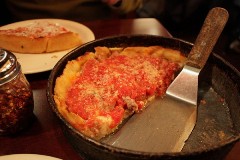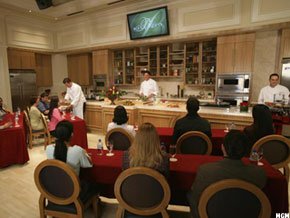What makes one wine great, and another just good?
One of the aspects of the wine trade that most fascinates outsiders is the disparity in prices between ordinary and great wines. Two winegrowers, just a few miles apart, grow grapes and harvest them. They crush them, let them ferment, press them and transfer the juice to oak barrels. A couple of years later, when they are standing on the shelves of a wine shop, one is a basic claret selling for £6, the other a classed growth Médoc selling for 10 times this price, and which isn’t supposed to be drunk for another decade, at least.
Let’s take another example. We’re standing in the famous Montrachet vineyard, home to the world’s most sought after Chardonnay. Price disparities are apparent here in at least two dimensions. First, if we travel a few hundred yards down the gentle slope and cross the N74, there are vineyards that make Bourgogne Blanc to be sold well below a tenner a bottle. You don’t get Montrachet that costs less than £100 a pop. But there’s another complexion to this. The row we are standing in is owned by a grower who isn’t thought to be on top of their game. You can pick this wine up for, say £120. Two rows along, however, the vines are owned by a superstar grower and their Montrachet fetches close to £600 a bottle on release.
The first issue we need to explore, therefore, in trying to understand these price disparities is that of terroir: the influence of the place where the grapes are grown. It’s a complex, much debated topic that I could happily write 10 000 words on – let’s try to summarize the issues in a paragraph. While terroir is a French word, it’s a concept widespread in the wine world. At the most basic level, it’s immediately apparent that the same grape varieties grown in even subtly different locations will make wines that are somewhat different, even when treated the same way in the winery.
These differences are due to variations in factors such as microclimate (through differences in elevation and aspect, for example) and soil properties (certainly drainage and water availability, but possibly also chemical differences). Of course, in real life, it’s hard to dissect these out from human factors such as viticultural regimes and winery practices, which shouldn’t really be included in definitions of terroir.
While almost everyone recognizes the existence of ‘terroir’, it’s the French who make the biggest deal out of it. Indeed, the lack of a word in French for winemaker is indicative of a mindset where wine is made in the vineyard, and winemakers are relegated to the position of custodians who allow the wines to make themselves. Cynics point out a potential financial motive at play: if the vineyard is seen as the sole arbiter of wine quality, then this acts to maintain the value of prime properties. Certainly, wines from vineyards of exalted reputation, which have a track record of making great wines (that is, terroirs where grape variety and environment are perfectly matched) fetch very high prices, sometimes even irrespective of the quality of what is in the bottle.
Second, there is the issue of reputation. Reputation matters a great deal in the world of wine. Our senses of taste and smell are, it seems, easily fooled. We bring a lot of expectation to bottles of wine that are supposed to be rather grand. In a mischievous experiment, a French researcher called Brochet served the same average-quality wine to people at a week’s interval. The twist was that on the first occasion it was packaged and served to people as a Vin de Table, and on the second as a Grand Cru wine. So the subjects thought they were tasting a simple wine and then a very special wine, even though it was the same both times. We’d probably all like to think we’d not have been taken in by this ruse, but Brochet’s tasters fell for it, hook, line and sinker. He analysed the terms used in the tasting notes, and it makes telling reading. For the ‘Grand Cru’ wine versus the Vin de Table, ‘A lot’ replaces ‘a little’; ‘complex’ replaces ‘simple’; and ‘balanced’ replaces ‘unbalanced’ – all because of the sight of the label.
Brochet explains the results through a phenomenon called ‘perceptive expectation’: a subject perceives what they have pre-perceived, and then they find it difficult to back away from that. For us humans, visual information is much more important than chemosensory information, so we tend to trust vision more. Brochet uses these results to explain Peynaud’s observation that ‘Blind tasting of great wines is often disappointing’.
This is not to say, though, that great wines never deserve their reputation. There do exist many seriously great wines that merit, at least in part, the reverence accorded to them. The very top ‘trophy’ wines, though, do have a reputation that extends beyond what is in the bottle. You are paying for more than just an exceptional bottle of wine.
Thirdly, scarcity is important. ‘Great’ wines are often made in small quantities, but there are many wealthy wine lovers for whom only the best will do. The result? Lots of people chasing relatively few wines. For those wines with a reputation of being the best, there is huge demand and relatively little supply, so the result is that prices get pushed up. Couple this with the law of diminishing returns (each extra increment in quality costs proportionately more), which fits quite well to wine, and it is easy to see how prices for top wines can escalate quite rapidly. Wealthy wine nuts aren’t usually looking for value for money (although they are sensitive to being ripped off); they generally want the best, and are prepared to pay for it.
Finally, while it does actually cost more to make better wine – all the necessary care in the vineyard, the economic loss of lowering yields in pursuit of quality, and the cost of good new oak barrels ramp the price up a bit – this is generally not the reason for the high prices asked for top wines. It’s the triumvirate of terroir, reputation and scarcity that cause the startling disparity in prices between the cheapest and most expensive wines.
I’m aware that in this brief piece, I’ve hardly touched on the issue of comparative wine ‘quality’. Are some wines ‘better’ than others? If so, why? And who gets to decide? Is it possible to be objective in assessing wines? These gripping questions will have to wait for another article.






























